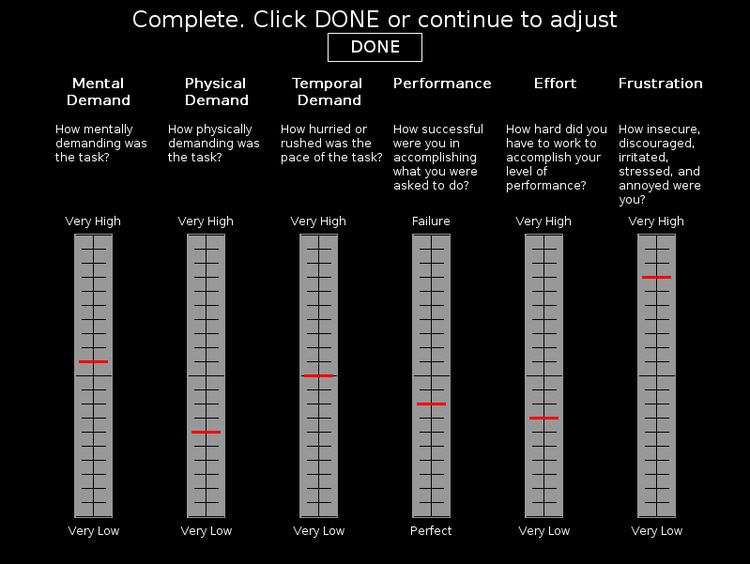 | ||
The NASA Task Load Index (NASA-TLX) is a widely used, subjective, multidimensional assessment tool that rates perceived workload in order to assess a task, system, or team's effectiveness or other aspects of performance. It was developed by the Human Performance Group at NASA's Ames Research Center over a three-year development cycle that included more than 40 laboratory simulations. It has been cited in over 4,400 studies, highlighting the influence the NASA-TLX has had in human factors research. It has been used in a variety of domains, including aviation, healthcare and other complex socio-technical domains.
Contents
Scales
NASA-TLX originally consisted of two parts: the total workload is divided into six subscales that are represented on a single page, serving as one part of the questionnaire:
There is a description for each of these subscales that the subject should read before rating. They are rated for each task within a 100-points range with 5-point steps. These ratings are then combined to the task load index. Providing descriptions for each measurement can be found to help participants answer accurately. These descriptions are as follows:
Analysis
The second part of TLX intends to create an individual weighting of these subscales by letting the subjects compare them pairwise based on their perceived importance. This requires the user to choose which measurement is more relevant to workload. The number of times each is chosen is the weighted score. This is multiplied by the scale score for each dimension and then divided by 15 to get a workload score from 0 to 100, the overall task load index. Many researchers eliminate these pairwise comparisons, though, and refer to the test as “Raw TLX” then. There has been evidence evaluating and supporting this shortened version over the full one since it might increase experimental validity.
When using the "raw TLX", individual subscales may be dropped if less relevant to the task.
Administration
The NASA-TLX can be administered using a paper and pencil version, online, or a number of other computerized implementations. If a participant is required to use the TLX tool multiple times, they only need to answer the 15 pairwise comparisons once per task type. If a participant’s workload needs to be measured for intrinsically different tasks, then revisiting the pairwise comparisons may be required. While there are multiple ways to administer the NASA-TLX, some may change the results of the test. One study showed that a paper-and-pencil version led to less cognitive workload than processing the information on a computer screen. To overcome the delay in administrating the test, the android app can be used to capture the details immediately after the task is completed.
